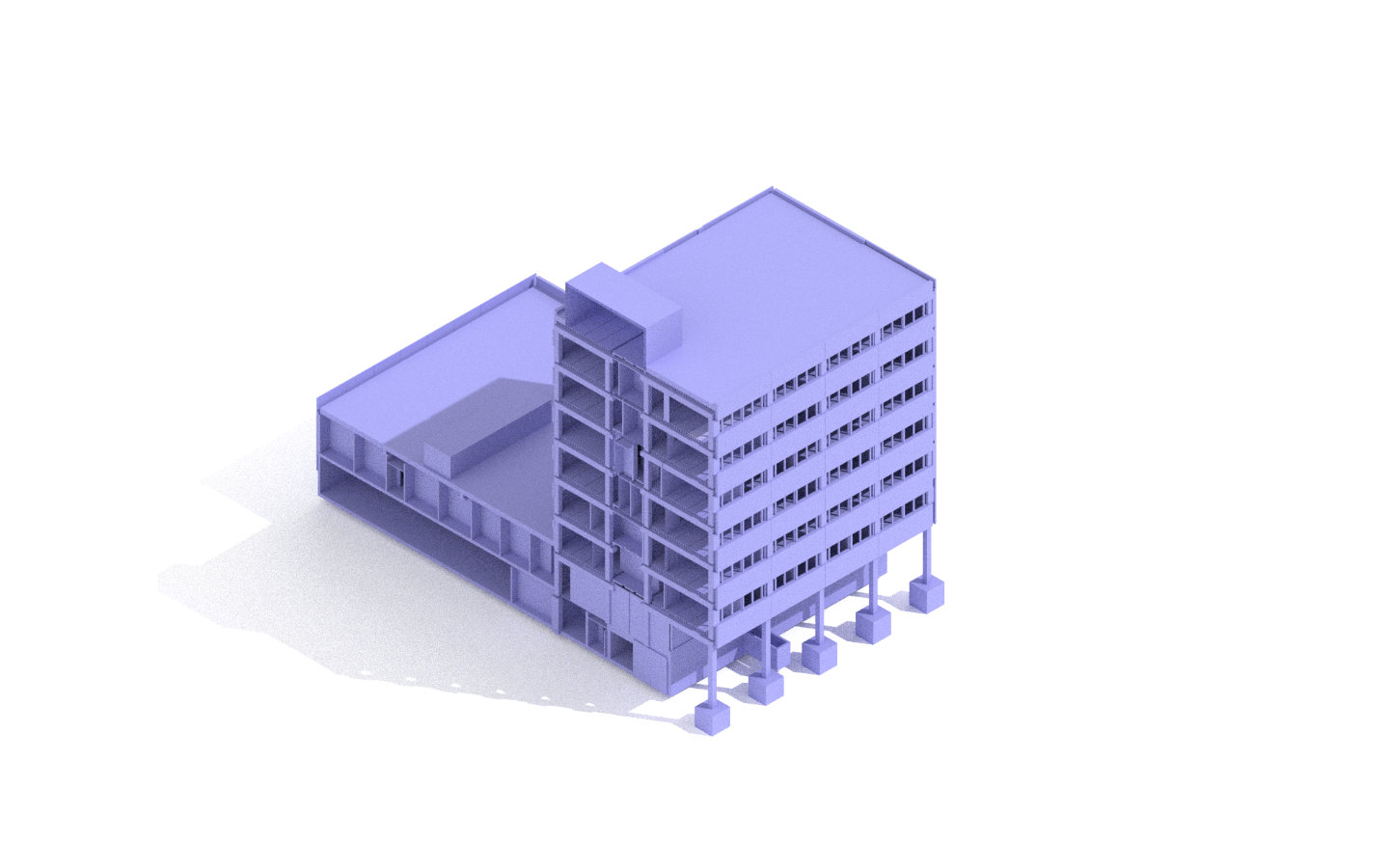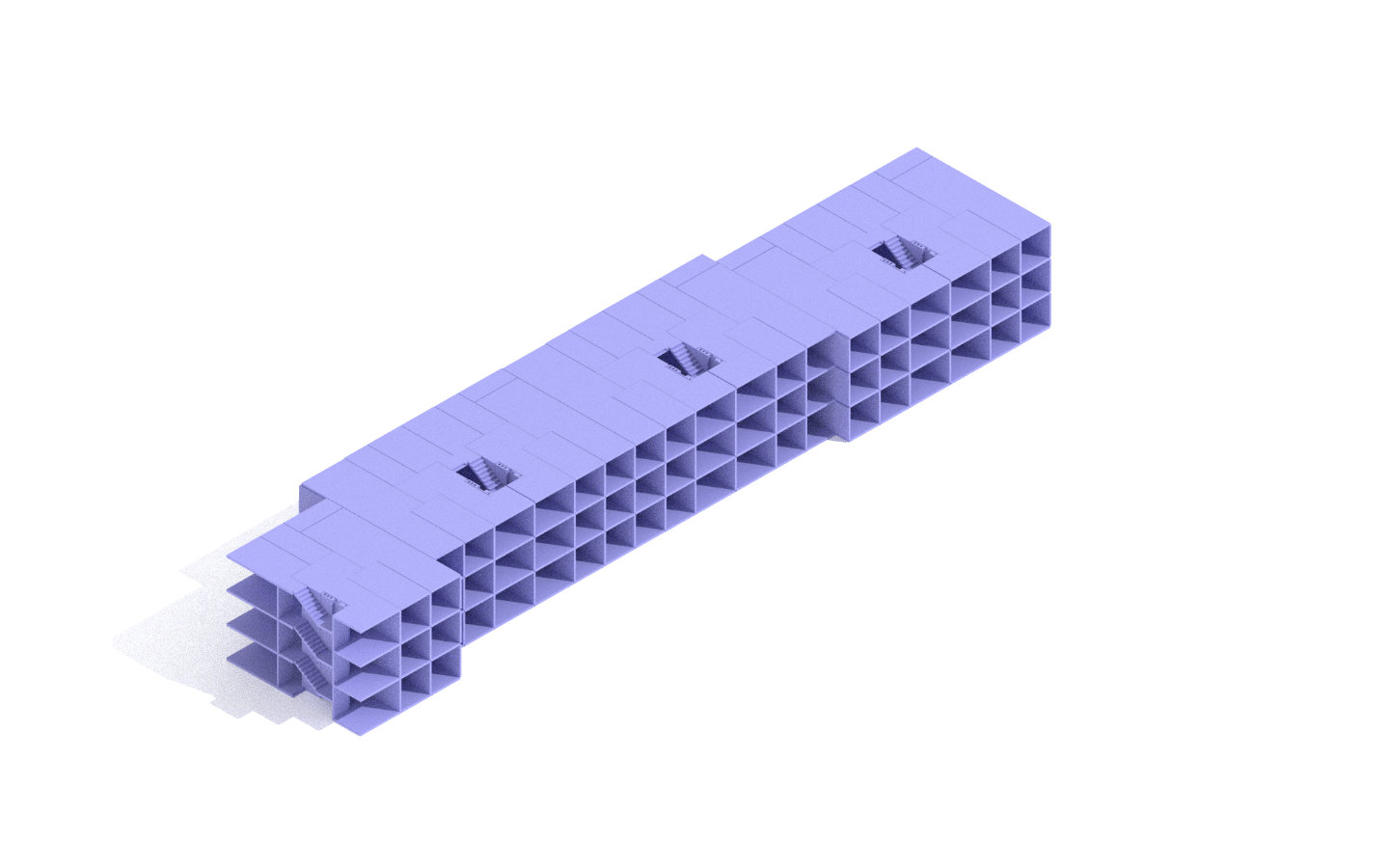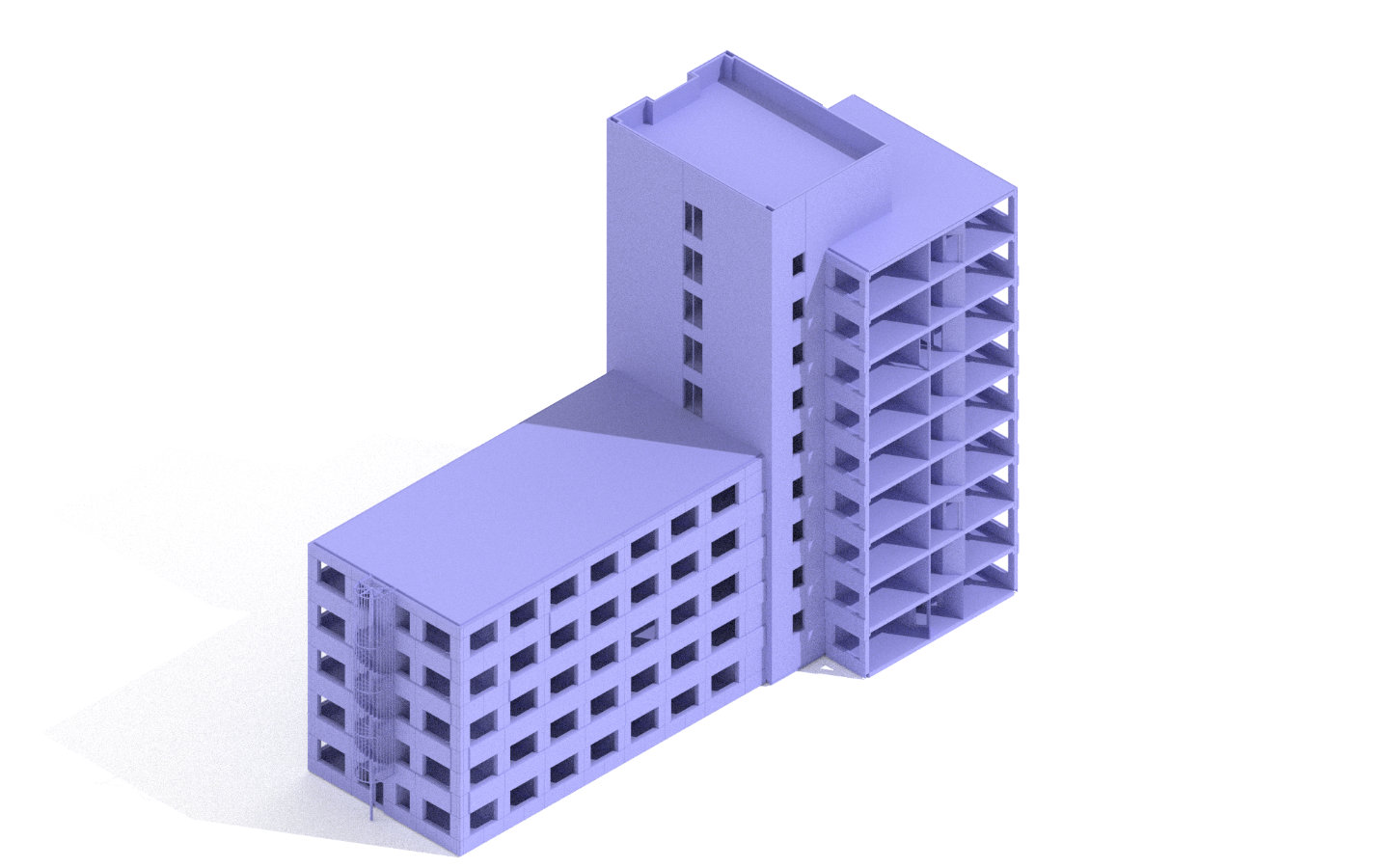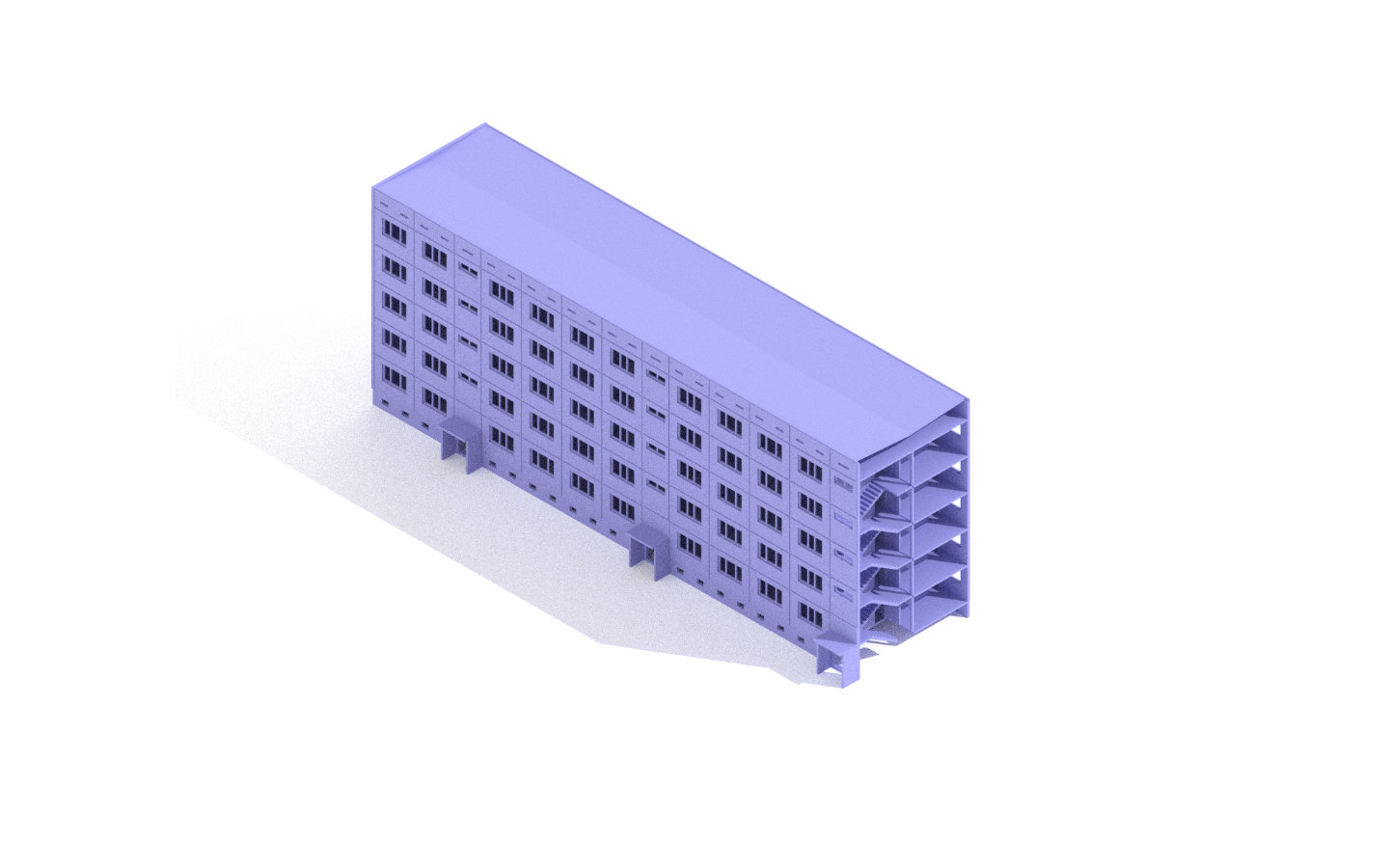Project pilots – donor buildings models
Finland
The donor building of elements for the Finnish reuse pilot is located in the City of Tampere, the third largest city in Finland, where ReCreate’s coordinator Tampere University is based and where several Finnish project partners also operate. The donor structure is a 7-floor office building with circa 3000 m2 of floor area, built in early 1980s, with a fully prefabricated concrete frame: columns, beams, hollow-core slabs, and sandwich exterior panels. The internal diving walls are made with lightweight construction. The building has been scheduled for removal due to a change of land use from a commercial to a residential function. Both the deconstruction and reuse efforts are projects of the construction company Skanska Finland Ltd. The plan in ReCreate is to deconstruct the prefabricated building frame, mainly focusing on the columns, beams and hollow-core slabs, which have been protected from weathering by the building envelope. The practical deconstruction expertise will be contributed by Umacon Ltd. From deconstruction, the elements will proceed to factory-refurbishment at Consolis Parma Ltd, a precast concrete manufacturer, where compliance with structural and architectural design requirements are ensured, as defined by engineering consultants Ramboll Finland Ltd and architects Liike Ltd Architectural Studio.
Sweden
The Swedish pilot will use prefabricated concrete elements primarily from the million-program area Drottninghög, where the municipal housing company Helsingborgshem owns a majority of the homes. The building from which the exhibited elements came was located at Kvarteret Drottninghög Västra 1. The apartment building of a total of approximately 2250 square meters was built in 1967-68 and contained twenty-four apartments. The structure was a bookshelf frame with transverse load-bearing inner walls of prefabricated concrete elements from the factory in Helsingborg.
The housing area Drottninghög is undergoing a 20-year process of regeneration and revitalization. Some original housing blocks from the 1960’s have already been demolished and some more are under review in the planning process. The ambition is to promote the careful reuse of concrete elements from demolished original housing in new future housing. If this is successful, it will both significantly lower the carbon footprint of new housing construction and promote a more positive local history.
Netherlands
The pilot project of the Netherlands country cluster is called Prinsenhof A. It is an office building located in the center of the city of Arnhem. The building is split into a low rise (5 stories) part, a high rise (9 stories) part and the core that connects them. The total floor area is appr 7400 m². The building is owned by the province of Gelderland and was constructed in 1986. The structure consists of hollow-core slabs spanning 13 m between precast concrete load bearing façade elements. To improve both the resistance and diaphragm action of the hollow core slab floor a structural concrete layer is applied.
The precast elements will be used in the construction of two new buildings. About 80 of the hollow-core slabs will go towards the new sporting center of the city of Arnhem. The remaining hollow-core slabs and the façade elements will be used for a new knowledge center for circular building and disassembly of Lagemaat. The disassembly is ongoing, it officially started on April 14th 2022, and performed by the deconstruction firm Lagemaat. The non-structural elements of the building will also be reused as much as possible, but this is not within the scope of the ReCreate project.
Germany
The project consists of a partial dismantling of 36 residential units over 2 floors and 6 entrances. The dismantling project takes place in an occupied state, whereby the affected tenants have to leave the apartments during the dismantling work. The owner, WOBAU Hohenmölsen GmbH, would like to reduce the number of vacant apartments in the city of Hohenmölsen and at the same time preserve the existing stock and upgrade it through renovation. In the course of the new construction of a youth center (builder: City of Hohenmölsen), up to 150 selected dismantled concrete elements are to be reused. Prerequisites for partial dismantling and reuse of recovered concrete elements
In the course of the planning and at the beginning of the execution phase, it became increasingly apparent that early communication between the various stakeholders (builders, planners, deconstruction company, interface research) is essential for an overall conceptual, coordinated and smooth construction project.
Prior to the partial dismantling, the range of concrete elements intended for reuse was marked in the installed state. The concept developed for the new construction of the youth center served as the basis for this. The basis for the execution of the partial demolition is an object-specific dismantling technology.
The dismantling technology is implemented with the help of two work teams (in the building and on the ground), a crane driver and an excavator driver. The concrete elements are partially loosened from the building structure manually, also with mini excavators, and lifted by the crane and carefully laid down. Concrete elements that are not recycled are pre-crushed with a “hydraulic pulverizer”. The (re)construction of a youth center in Hohenmölsen with a planned GFA of 800 m² is planned for the end of 2023.





